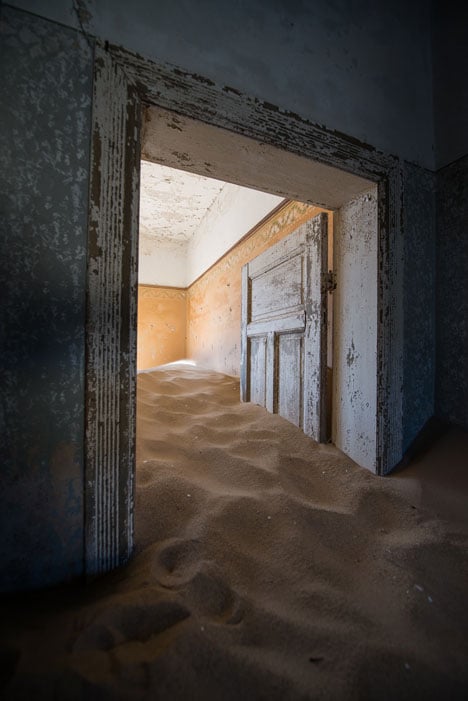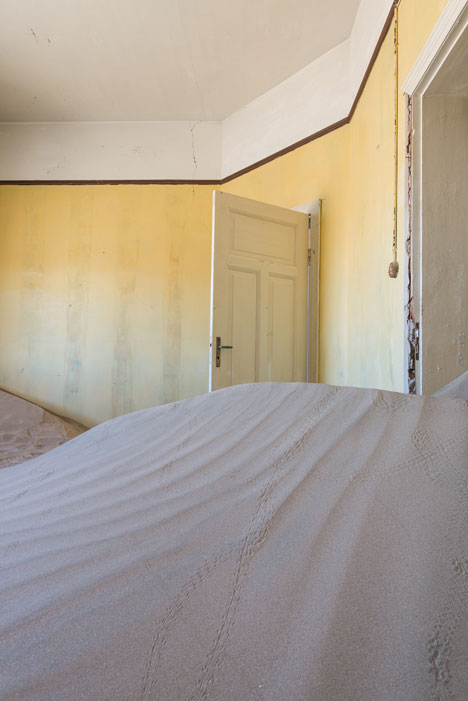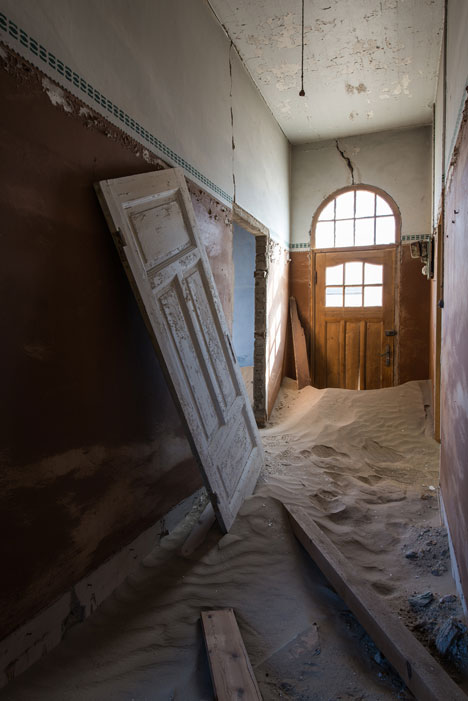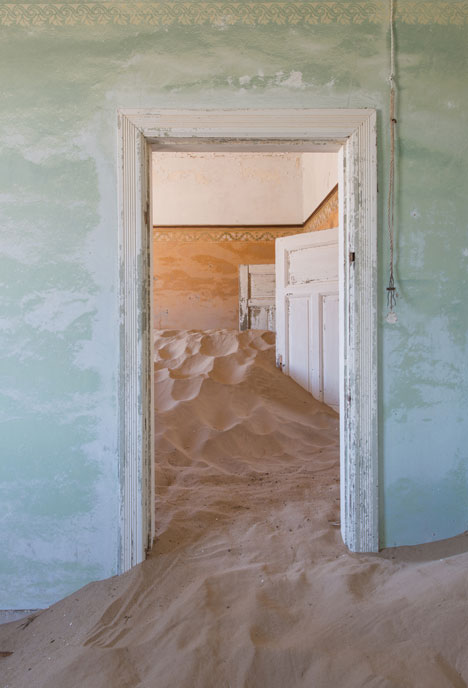Ghost town engulfed by mounds of sand in photography by Romain Veillon
Photo essay: French photographer Romain Veillon explored an abandoned town that is slowly being consumed by the Namib desert to create these images of once-opulent buildings filled with sand dunes.
The discovery of diamonds at the turn of the twentieth century prompted the establishment of Kolmanskop as a settlement for German miners, but it was abandoned just 50 years later when the diamond fields became exhausted and the value of the stones decreased. Now little more than a tourist destination, the ghost town is gradually disappearing under sand, so Romain Veillon paid a visit to document its remains.
The series is entitled Les Sables du Temps, which translates as The Sands of Time. Veillon hopes it will serve as both a memory of the perishing town and a reminder of the "strength of nature".
Once rich and opulent, Kolmanskop is now a ghost town invaded by sand and lost in the middle of the Namib desert. But its history stays as short as it is surprising; founded after the discovery of diamonds by German settlers in 1908, Kolmanskop went through a real "diamond rush" and very fastly became the nerve centre of the area, due to its rich deposit of diamond. The legend says that even by night, you only had to go down to find diamonds in the sand, thanks to the moonlight.

Kolmanskop faced a striking prosperity that attracted many adventurers and other prospectors from across Africa, prosperity symbolised by the fact that Kolmanskop inhabitants used to get their clean water from 1000 kilometres away in Cape Town, or that they imported their champagne from Reims!
Kolmanskop emerged from the soil very quickly, as the new immigrants settled in the city. From a German inspiration, you could soon find there a hospital, a butcher shop, a bakery, an ice factory, a bowling alley, a casino, a school, a power plant and even a swimming pool. The hospital there received the first X-ray machine of the entire African continent, although the machine was mostly used to verify if miners had swallowed diamonds. At its zenith, Kolmanskop welcomed more than 1200 people and 700 families.

Unfortunately the drop of the diamond price after the First World War and the discovery of a bigger deposit south buried the last hope of Kolmanskop. Little by little the inhabitants quit the town, leaving behind them their houses and their belongings. By 1954, the city was entirely abandoned. Since then, it has slowly but surely become more and more covered by sand. Nowadays, Kolmanskop is only visited by the few tourists that venture into the isolated area.
With this set of photographs, I wanted to pay a tribute to this particular place and its past. For that, I have decided to underline the strength of nature that always takes back what is her's, but also the ephemeral aspect of human constructions - symbolised here by the progress of sand and dunes through what remains of the city.

These silted doors are for me the symbol of an inevitable passing of time, reminding us that soon Kolmanskop will be no more and that we should enjoy it while it lasts. The light of the spot is also essential to me because it brings an atmosphere almost timeless and a strange sensation that is almost unreal.

You can lost in those dunes looking for the ghost of an ancient time, or trying to figure out what incredible stories must have taken place there.